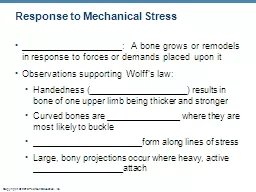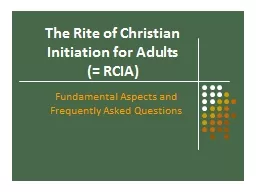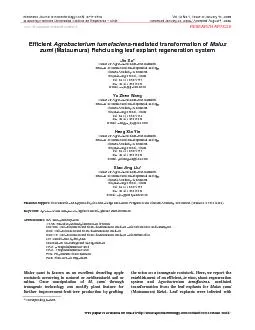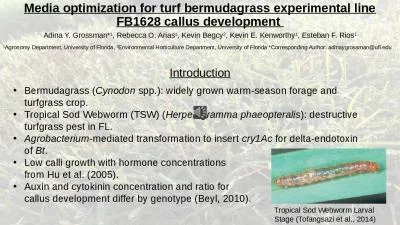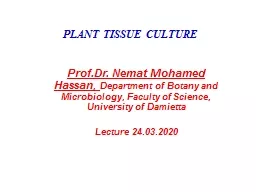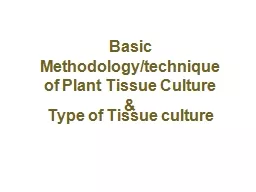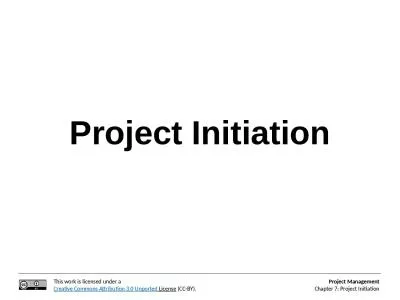PPT-INITIATION AND MAINTENANCE OF CALLUS
Author : josephine | Published Date : 2022-06-01
INTRODUCTION 1 A callus consists of an amorphous mass of loosely arranged thin walled parenchyma cells arising from the proliferating cells of the cultured explants
Presentation Embed Code
Download Presentation
Download Presentation The PPT/PDF document "INITIATION AND MAINTENANCE OF CALLUS" is the property of its rightful owner. Permission is granted to download and print the materials on this website for personal, non-commercial use only, and to display it on your personal computer provided you do not modify the materials and that you retain all copyright notices contained in the materials. By downloading content from our website, you accept the terms of this agreement.
INITIATION AND MAINTENANCE OF CALLUS: Transcript
Download Rules Of Document
"INITIATION AND MAINTENANCE OF CALLUS"The content belongs to its owner. You may download and print it for personal use, without modification, and keep all copyright notices. By downloading, you agree to these terms.
Related Documents



